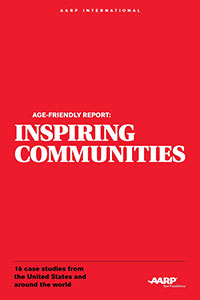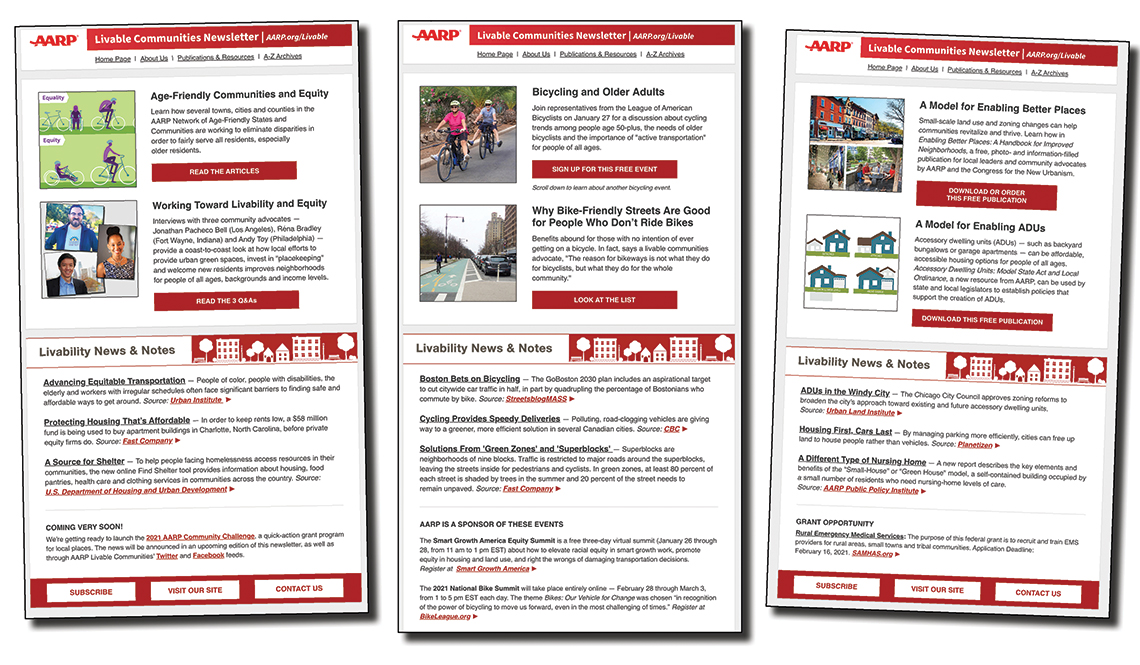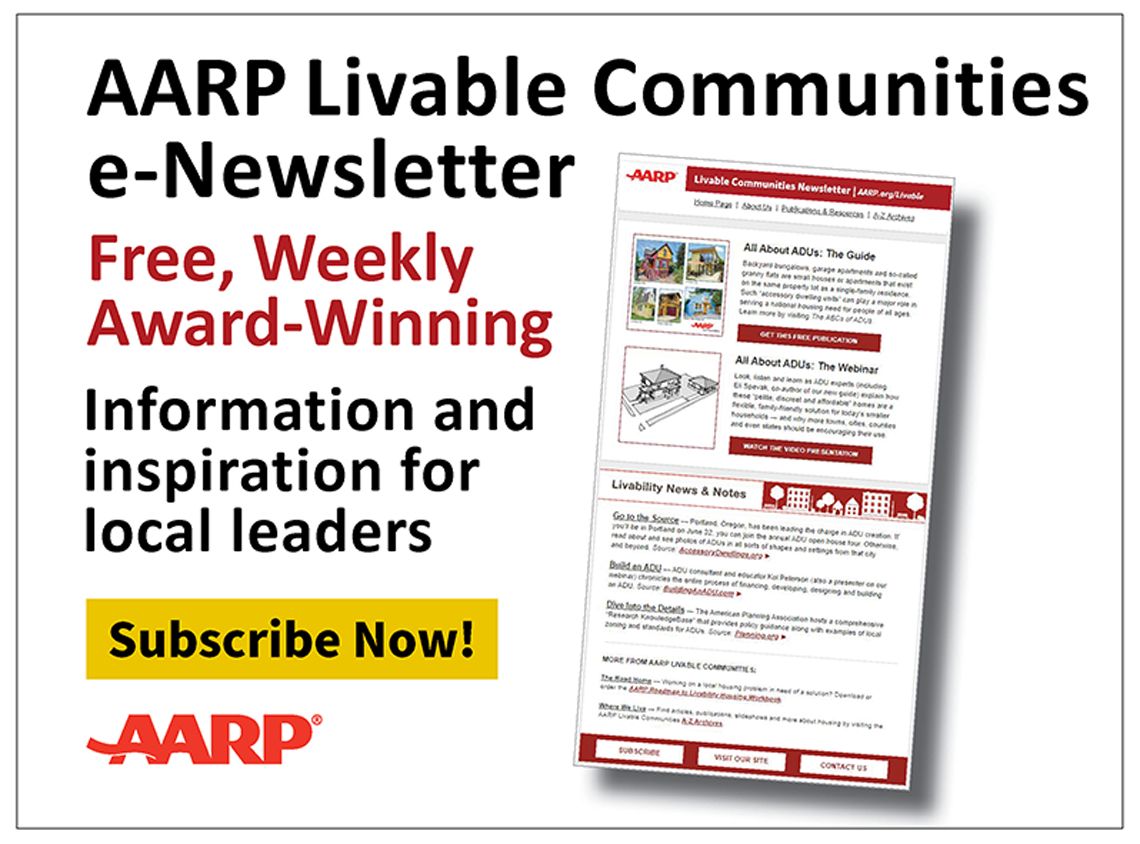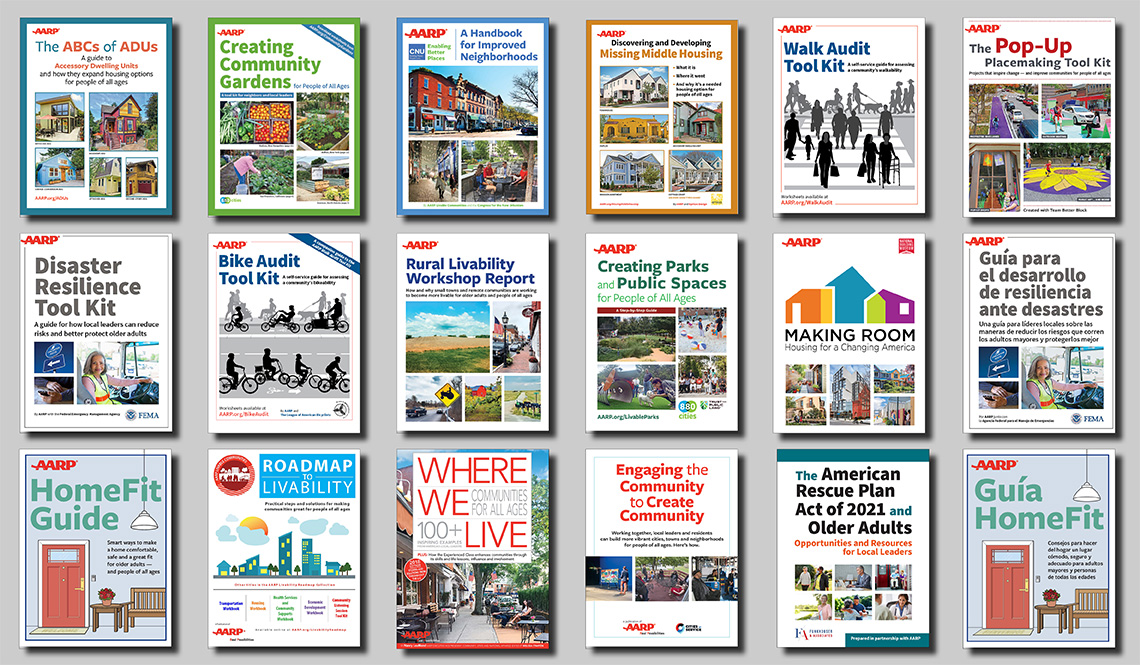The 8 Domains of Livability: Case Studies
Two "good practice" examples from each domain provide information and inspiration
By 2050 more than 20 percent of the world's population will be age 60 or older. Because of that, many cities, towns and communities across the globe are already working to address the needs of their older residents and prepare for future generations.
AARP International looked at efforts in the United States and worldwide to identify projects and programs that are worth sharing and, when possible, replicating. The Age-Friendly Report: Inspiring Communities presents a collection of age-friendly "good practices."
We call them "good" rather than "best" practices simply because we can’t possibly compare every age-friendly initiative in the world, nor would we want to. After all, any community effort to effectively meet the needs of older residents is a welcome one.
The 16 communities featured in the report are working toward becoming more age-friendly, either as a member of the U.S.-based AARP Network of Age-Friendly Communities or the World Health Organization Global Network for Age-friendly Cities and Communities — or both.
The report is organized according to which of the World Health Organization’s "8 Domains of Age-Friendliness" (referred to in the U.S. as the "8 Domains of Livability") the work most represents. However, since the efforts underway in each community touch upon needs in multiple domains, we identify those sub-domains as well. Individually and together, the case studies show the inspiring work now underway to meet the needs of older adults. Creating great places for people of all ages enables older residents to participate in community life.
Domain 1: Outdoor Spaces and Buildings
- Revitalizing a Treasured Public Space:
"Tattnall Square Park, Macon-Bibb, Georgia, U.S.
- Making Streets and Sidewalks More Walkable:
Block-by-Block Walk/DC311 Mobile App, Washington, D.C., U.S.
Domain 2: Transportation
- Educating Older Adults About Using Public Transit:
Edmonton Transit Education Programs and Tools, Edmonton, Alberta, Canada
- Better Benches and Bus Stop Shelters:
The CityBench and Bus Shelter Program, New York, New York, U.S.
Domain 3: Housing
- Making Big Sense of Small Homes:
Accessory Dwelling Units, Portland, Oregon, U.S.
- Living Together Benefits Young People and Old:
Intergenerational Housing, Lyon, Rhône-Alpes, France
Domain 4: Social Participation
- Promoting a Positive Story of Aging:
Age-Friendly Manchester Cultural Offer Program, Manchester, England, United Kingdom
- Making a City's Streets Safer and Sociable:
Brownsville CycloBia, Brownsville, Texas, U.S.
Domain 5: Respect and Social Inclusion
- Building a Playground for All Ages:
Grandparents Park, Wichita, Kansas, U.S.
- Helping Make Dreams Come True:
The "Dreams Never Get Old" Bulao Movement, Taipei City, Taiwan
Domain 6: Civic Participation and Employment
- Keeping Older Employees on the Job:
Human Resources Policies and Initiatives, Stoke-on-Trent, Staffordshire, United Kingdom
- Building Bridges Across Age and Culture:
Project SHINE, Philadelphia, Pennsylvania, U.S.
Domain 7: Communication and Information
- Finding a Place of Their Own:
Men's Sheds, Lane Cove, New South Wales, Australia
- Caring for the Caregivers:
Livable Communities Caregiver Coaching Program, Westchester County, New York, U.S.
Domain 8: Community and Health Services
- Putting a Fun Spin on Staying Healthy:
50 and Better Senior Health Fair, Des Moines, Iowa, U.S.
- Building a Community for a Lifetime:
Auburn Hills Community Center, Auburn Hills, Michigan, U.S.
Published August 2015
Project Manager: Natalie Turner (AARP International), Editor: Melissa Stanton (AARP Livable Communities)
Researcher: Caroline D. Bergeron (DrPH-c, MSc, University of South Carolina)
Stay Informed — For Free!
AARP.org/Livable
Enter a topic, name, place, etc.




